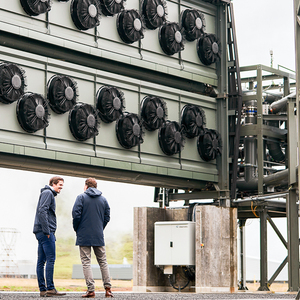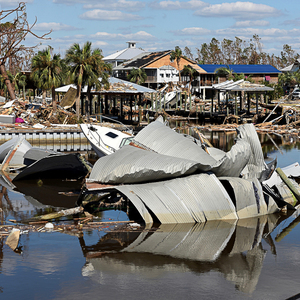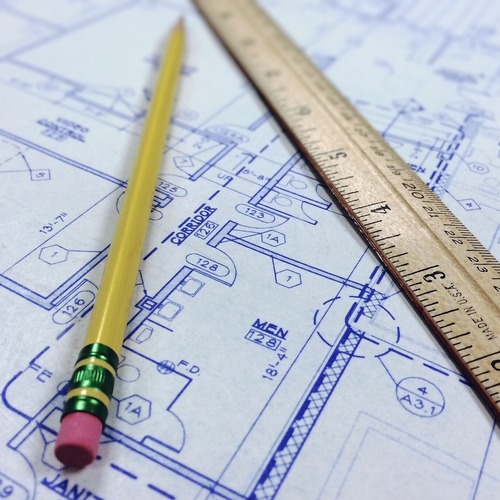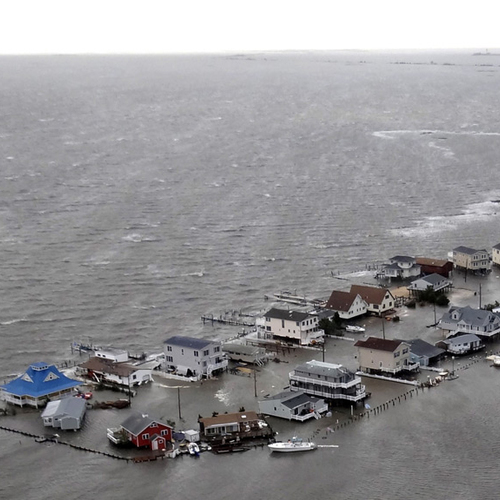Image Credit: IPCC
Image Credit: IPCC This graph shows worldwide greenhouse gas emissions by sector. This is the cover of the Working Group I report of the IPCC Fifth Assessment Report.
Image Credit: IPCC
With Earth Day having been this week, I’ve been musing about the state of our environment and where we’re heading.
Forty-four years after the first Earth Day in 1970 (when I was a teenager and the Earth Day Coordinator in my junior high school in Pennsylvania), a lot has been accomplished. Our skies are generally cleaner (in the U.S. at least). We’re no longer dumping raw sewage into our rivers, and fish have returned to many of our most polluted bodies of water — including Ohio’s infamous Cuyahoga River, which caught fire several times in the 1960s. The most toxic pesticides, such as DDT, have been banned in the U.S. and bird species like the bald eagle and peregrine falcon have rebounded from the brink of extinction in the lower 48 states.
But all is not well. The looming crisis of climate change is ever more obvious today — even as climate science deniers and the well-paid politicians they invest in create an impression in the media that there remains significant debate about global warming.
Climate change threatens the environmental gains we’ve realized since the 1970s with far greater environmental catastrophe over the coming decades and centuries. The IPCC (Intergovernmental Panel on Climate Change) has recently released its three-part Fifth Assessment Report — the most definitive to date in describing what we can expect and what we are already experiencing with climate change.
Understanding the IPCC
The IPCC and its periodic reports can be pretty confusing, especially for acronym-challenged individuals like me, so let me provide a bit of background. The IPCC was established by the United Nations Environment Programme (UNEP) and another UN organization, the World Meteorological Organization (WMO), in 1988 to better understand climate change, what its impacts might be, and what to do about it.
The Panel released its first Assessment Report two years later, in 1990. Like the subsequent Assessment Reports, this was really three reports from three different Working Groups. Here’s how these Working Groups are described on the IPCC website:
- Working Group I assesses the physical scientific aspects of the climate system and climate change.
- Working Group II assesses the vulnerability of socio-economic and natural systems to climate change, negative and positive consequences of climate change, and options for adapting to it. This group focuses both on sectors (water resources; ecosystems; food & forests; coastal systems; industry; human health) and regions (Africa; Asia; Australia; New Zealand; Europe; Latin America; North America; Polar Regions; Small Islands).
- Working Group III assesses options for mitigating climate change through limiting or preventing greenhouse gas emissions and enhancing activities that remove them from the atmosphere.
An expanding series of IPCC reports
Since the first Assessment Report in 1990, Supplemental Reports were published in 1992 by Working Groups I and II. The Second Assessment Report was published in 1995; the third in 2001; the fourth in 2007; and the Fifth Assessment Report was released in three phases starting last September.
With this Fifth Assessment Report, the sub-reports were released as follows:
- The Working Group I Report, “Climate Change 2013: The Physical Science Basis” (1,535 pages!), was released in September 2013 in Stockholm;
- The Working Group II Report, “Climate Change 2014: Impacts, Adaptation, and Vulnerability,” was released in March 2014 in Yokohama, Japan; and
- The Working Group III Report, “Climate Change 2014: Mitigation of Climate Change,” was released in April 2014 in Berlin.
A Synthesis Report of the Fifth Assessment Report will be published later this year.
In addition to these main reports, IPCC has published nine special reports over the years, including Carbon Dioxide Capture and Storage (2005), Renewable Energy Sources and Climate Change Mitigation (2011), and Managing the Risks of Extreme Events and Disasters to Advance Climate Change Adaptation (2012). All of the IPCC reports can be found here.
IPCC reports as a basis for policy
The ongoing IPCC reports have provided the foundation for important policies at an international level.
Starting in 1990, when the first IPCC Assessment Report was published, the U.N. General Assembly decided to initiate negotiations on how to regulate greenhouse gas emissions, and in 1992 the United Nations Framework Convention on Climate Change (UNFCCC) was opened for signatures at the UN Conference on Environment and Development in Rio de Janeiro, Brazil.
By 1996, IPCC had published comprehensive guidelines that countries could use in carrying out detailed greenhouse gas inventories, and these formed the basis of the UNFCCC Kyoto Protocol, which was adopted a year later and went into effect in 2005.
Ever-more-certain science, but stalling policy action
Each subsequent IPCC Assessment Report, especially the most recent, has painted a clearer and more detailed picture of what is happening to the Earth’s climate and the human causes of those changes.
Unfortunately, where the early reports included a range of impacts we could expect, reality has demonstrated impacts at the high end of the predicted range. In other words, the scientists in IPCC have been shown to be conservative in their projections of the severity and speed of climate change.
In the Working Group I report from the Fifth Assessment Report, global mean temperatures by 2100 are now expected to be 3.7 C° to 4.8 C° (6.7 F° to 8.6 F°) higher than pre-industrial levels — up significantly from the early Assessment Reports. Already an 0.61 C° (1.1 F°) increase in global temperature has been measured.
The Working Group II report concluded with “very high confidence” that “impacts from recent climate-related extremes, such as heat waves, droughts, floods, cyclones, and wildfires, reveal significant vulnerability and exposure of some ecosystems and many human systems to current climate variability.”
The impacts of climate-related extremes, according to this Working Group II report, will include “alteration of ecosystems, disruption of food production and water supply, damage to infrastructure and settlements, morbidity and mortality, and consequences for mental health and human well-being.”
Next week I’ll speculate as to what it will take to bring about real action on climate change.
Alex is founder of BuildingGreen, Inc. and executive editor of Environmental Building News. In 2012 he founded the Resilient Design Institute. To keep up with Alex’s latest articles and musings, you can sign up for his Twitter feed.
Weekly Newsletter
Get building science and energy efficiency advice, plus special offers, in your inbox.
















8 Comments
Real info...
Most all charts we see showing global temperature, CO² ppm, or Methane are from a few hundred years to 400-800k years, and all of them shows all levels going up, which is the basis for all the hoopla about climate change. However, if we take a look at those same statistics but from the Cenozoic age, or even much farther, or historical ice-ages, we see that Earth is in a “cooling” mode by about 8°C, CO² and Methane levels are a small percentage of what it used to be. So perspectives can and are manipulated all the time.
Having said that, can we live in a better planet than we are making it to be? Yes! Should we do all is possible to better manage our global resources? Yes! Can we build better buildings for cleaner communities? Yes! Can we build better building for our own economic and healthy reason? Yes. Do I want to design better homes for my clients? You bet I do too.
There are a million reasons why we should do better, but at the same time, all I’m saying is the “environmental” community needs to tell the truth without selectively manipulating the information and using scare tactics that can be more related to global changes than ALL MAN MADE! 400-800k years of climate change history is about a minute of my day, or how long it takes me to chow down a BBQ rib... Let’s get real!
earth day
Co2 levels fluctuated quite a bit over the last 800 thousand years or so, but never went much above 300 ppm until around when I was born. Now they are approaching 400 ppm.
What matters is what is happening now, not on a cosmic scale, but on a human scale. If all those scientists are correct, we face a non-trivial chance of seeing sea levels rise by several feet over the next century or so. That's a serious problems for a lot of humans. The fact that when it happens, sea levels might be lower that they were at some point in the pre-modern era is irrelevant. Fred Flintstone could move his stuff up the nearest hill. Moving Miami or Bangladesh up hill is not going to be so easy and it just seems unfair to saddle future humans with the cost.
You note that we should be more efficient and less wasteful. It is inconceivable that, given the political climate, any government action will attempt to do more than that, so even if we differ as to the nature of the threat, we agree that we should do something other than waste energy and resources.
Amazing to view the
Amazing to view the Adirondack mountains covered in trees that grow just fine while sipping CO2 from an atmosphere that is only .04% made up of what they need to live and thrive. .04% when our human share of the atmosphere oxygen is 21%. There is 525 times more oxygen for us than there is CO2 for trees. And we are little 5-6' tall life forms and they are 100'-300' beasts. One of us hundreds of pounds, one of them thousands of pounds.
I find it interesting. I would love to hear from a scientific american as to why plants are perfectly able to thrive and exist on such a low percentage of atmosphere being what they need.
Response to Armondo Cobo
Armando,
So, in your opinion, the IPCC are not actually just scientists but an "environmental community"?
Does it follow then that geologists, oceanographers, glaciologists or other earth scientists are also not just scientists, but are also part of an "environmental community"?
Or does it depend on the type of work they do, like help find gas to run your BBQ?
And these communities have some agenda other than just reporting their scientific findings then?
Response to aj builder
I don't know whether to consider myself a "scientific american", but you are overlooking the fact that humans move. Movement is what demands so much energy and oxygen consumption/metabolism. Thinking also requires a surprising amount of energy.
When humans are deprived of oxygen, they can produce some energy by what is called anaerobic metabolism, also called the lactic acid cycle. But the amount of energy produced anaerobically is far less than what can be produced with oxygen (aerobically). Humans who primarily generate energy anaerobically are quite sick and hardly functional in society.
Earth Day 2014 and Climate Change
As a home performance contractor who also educates about green building I often find myself ashamed of the design and construction industry and mystified by home owners reluctance to have an energy audit done so that I can advise them on how to find out what is going on with their houses energy use.
Most designers and builders are clueless about what they are doing wrong, and though their house is one of their biggest assets, home owners prefer to spending money on energy rather than on reducing energy use.
Let's face it, global climate change is a complex subject, but if we wait until temperatures have risen it will be too late.
Improved performance of existing buildings is the fastest way to reduce CO2 emissions with the best ROI, so we should all back the current bill in the Senate proposing robust incentives for energy performance upgrades.
Earth Day 2014 and Climate Change
The fact is that the people who sell us energy have plenty of money to spin their false climate change denials so that their profits can continue to roll in.
Energy efficiency improvements and renewable energy are the proven best ways to grow our economy and create jobs while reducing our negative effects on the environment.
Bruce people spend on energy.
Bruce people spend on energy. The only way to reduce CO2 is to ban the sale of it.... Limit the amount one can buy. Carbon tax it till it isn't affordable. Like smoking taxes pay extra for your poor choice.
Cities need a road use tax high enough to force down road use. But contractors get exemptions as we need sweet pick ups and roads and low cost carbon to get to our low CO2 customers that drive E cars and ride trains or walk or work from home raising chickens in their little back yard free range...
Log in or create an account to post a comment.
Sign up Log in